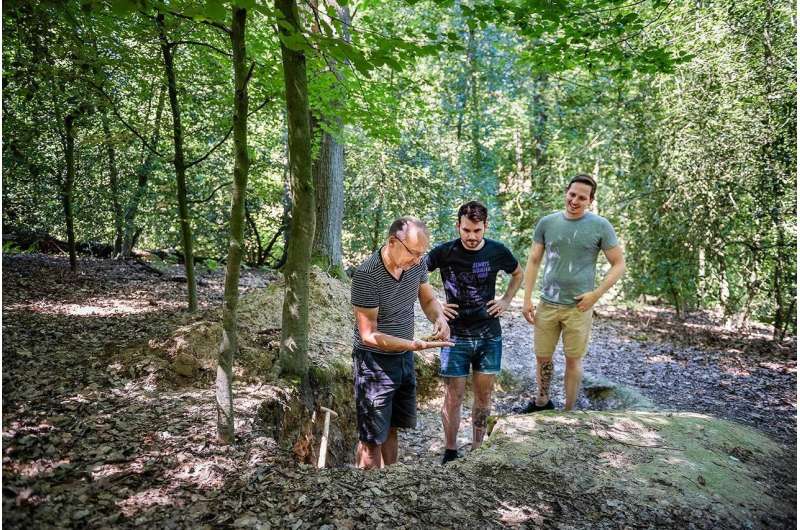Professor Bernd Marschner with project members Michael Herre and Dr. Julian Heitkötter (from the left) at a soil profile. Credit: Damian Gorczany
A largely unknown terrain begins not so far below the surface of the forest floor. While the processes in the top 30 centimetres of the soil are well known, deeper areas of the soil are the focus of a research group led by Professor Bernd Marschner from the Institute of Geography at the Faculty of Geosciences at Ruhr-Universität Bochum (RUB). Twice as much carbon is stored here as in the atmosphere and vegetation together. How old it is, where it comes from and why nothing metabolises it is the subject of the investigations.
More than half of the carbon in the soil is located deeper than 30 centimetres below the surface – how long has it been there? Is there life there? Does an exchange take place with carbon in the atmosphere? To answer these questions, the researchers are conducting comprehensive tests on representative soils in the Hannover and Göttingen areas.
With extreme care, they dug shafts in the forest floor, from which they continuously take samples and analyse them. With great effort, they investigated how much carbon from the leaves of the trees penetrates deep into the forest floor. In autumn, they exchanged all the fallen beech leaves from some of the trees for leaves that had previously been marked. "To our surprise, we discovered that less than one percent of the carbon from the leaves had reached the deeper soil layers," says Bernd Marschner.
The carbon deep down is therefore very old, often over 1,000 years old below 50 centimetres. Where does it come from and above all: Why does it remain so untouched? Why don't these creatures metabolise it? The researchers in the group were able to show that there is life deep in the soil. They treated samples from deep soil layers with sugar solution and suddenly discovered considerable metabolic activity.
Now they are examining the effects of other substances on the microorganisms in the soil in order to determine whether these can also wake them up. "This question is particularly interesting because we should try as far as possible to avoid the old carbon stored in the soil being metabolised and released into the atmosphere as CO2," says Bernd Marschner. "Otherwise, the additional CO2 as a greenhouse gas would significantly promote climate change."
Provided by Ruhr-Universitaet-Bochum
























